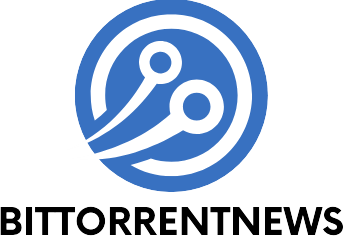Table of Contents
ToggleIn a world where binge-watching and scrolling through social media have become the new norm, keeping tabs on screen time can feel like trying to catch a greased pig. But fear not! Tracking screen time doesn’t have to be a chore. With the right tools and a sprinkle of determination, anyone can regain control over their digital habits and reclaim those precious hours lost in the pixelated abyss.
Understanding Screen Time
Screen time refers to the amount of time spent in front of electronic devices, such as smartphones, tablets, computers, and televisions. Many people enjoy using these devices for work responsibilities, entertainment, and social interaction. As digital consumption increases, understanding how it affects overall well-being becomes essential.
Tracking screen time highlights patterns in usage. Individuals can identify how much time they dedicate to various activities, such as streaming video, scrolling through social media, or working on projects. Analyzing this data can reveal habits that can lead to improved time management.
Health professionals indicate that excessive screen time may contribute to physical and mental health issues. Reports show that too much screen exposure can lead to eye strain, sleep disruption, and increased anxiety. Recognizing these effects leads to more mindful consumption and healthier digital practices.
Utilizing built-in tools or smartphone apps makes it easier to monitor screen time. Many devices now offer screen time trackers that provide weekly usage summaries. Users can set goals to reduce time spent on certain activities, fostering a more balanced approach to device use.
Balancing screen time is crucial for individuals of all ages. Encouraging breaks from screens helps reduce fatigue and promotes healthier habits. Engaging in offline activities, such as reading, exercising, or spending time with family, can enhance overall life satisfaction.
Importance of Tracking Screen Time
Tracking screen time plays a vital role in maintaining a balanced digital lifestyle. It reveals how electronic device usage affects overall well-being.
Benefits for Health and Wellbeing
Maintaining awareness of screen time fosters improved health. Excessive screen exposure contributes to issues like eye strain, disrupted sleep patterns, and heightened anxiety. By tracking usage, individuals can identify negative impacts and make informed decisions about reducing time spent on screens. Mindfulness in consumption leads to healthier digital habits. Engaging with built-in tools or dedicated apps facilitates goal-setting for reduced screen exposure, resulting in better physical and mental health outcomes.
Impact on Productivity
Monitoring screen time strengthens productivity levels. Awareness of how much time is spent on various activities allows for identification of distractions. Many find that social media and streaming often consume substantial portions of their day. By tracking this time, users can prioritize essential tasks effectively. Establishing boundaries can enhance focus, ultimately leading to more efficient work processes. Regularly reviewing screen time metrics provides insights that empower individuals to manage their schedules and improve overall work-life balance.
Methods to Track Screen Time
Tracking screen time helps individuals gain insights into their digital habits. Several effective methods exist, each offering unique features and insights.
Built-in Device Features
Smartphones and tablets come equipped with built-in screen time tracking features. Apple devices, for example, have a “Screen Time” function that displays daily and weekly usage statistics. Android devices offer a similar “Digital Wellbeing” tool, showing time spent on apps and providing usage reports. Users can set daily limits on specific applications, promoting healthier technology use. Notifications alert users when they exceed their set time, encouraging mindful consumption. These built-in features provide a straightforward way for individuals to monitor their digital habits without the need for external apps.
Third-Party Apps
Various third-party apps enhance screen time tracking for deeper insights. RescueTime tracks activity and categorizes usage patterns across devices, allowing users to understand time spent on productive versus unproductive tasks. Moment focuses on mobile device usage, providing users with actionable insights and daily reports. Another option, StayFree, offers customizable features such as reminders, allowing individuals to stay within set limits. Users benefit from the detailed analytics provided by these apps, enabling them to make informed adjustments to their screen time based on personal goals. By leveraging third-party applications, users can gain a more comprehensive understanding of their device usage.
Setting Screen Time Goals
Setting screen time goals enables individuals to manage their digital habits effectively. Clear targets foster a healthier relationship with technology.
Establishing Healthy Limits
Establishing healthy limits involves setting realistic boundaries for screen usage. Many experts recommend aiming for no more than two hours of recreational screen time per day. Individuals should consider their unique lifestyles, as needs may differ among various age groups. Tracking daily or weekly screen time metrics reveals usage patterns. Those who regularly review this data can adapt their goals accordingly, promoting mindful consumption. Using built-in device features or apps assists in setting these boundaries and provides reminders when limits are reached.
Creating a Balanced Schedule
Creating a balanced schedule encourages individuals to incorporate both screen and offline activities into their daily routines. Allocating specific times for work, leisure, and social interaction ensures a well-rounded approach. Planning short breaks during extended device use improves focus and decreases fatigue. Engaging in more offline hobbies, like reading or exercising, fosters mental well-being. Individuals should include family time in their schedules, reinforcing connections and enhancing life satisfaction. By strategically balancing screen and non-screen activities, individuals can enjoy technology without compromising their overall health and happiness.
Tips for Effective Screen Time Management
Establishing clear screen time boundaries promotes healthier digital habits. Prioritize essential tasks by recognizing high distraction tendencies associated with social media. Setting a daily limit ensures that recreational screen time does not exceed two hours, encouraging balance in daily activities.
Incorporating offline hobbies into the routine helps mitigate excessive screen usage. Engage in activities like reading, exercising, or spending time with family to cultivate mental well-being. Creating a diverse schedule offers a blend of screen and non-screen activities that fosters personal growth.
Utilizing built-in device features aids in effective monitoring of screen time. Both Apple’s “Screen Time” and Android’s “Digital Wellbeing” provide detailed statistics on daily and weekly usage. Notifications for exceeding set limits can prompt users to reassess their habits regularly.
Exploring third-party apps enhances the tracking experience. Apps such as RescueTime, Moment, and StayFree deliver deeper insights into how and when devices are used. Customizable features allow individuals to adjust their screen time based on real-time data.
Reviewing screen time metrics consistently helps maintain focus. Individuals gain a clearer perspective on their digital consumption patterns, allowing for informed decision-making. Tracking metrics serves as a reminder of what activities draw attention away from more productive engagements.
Conclusion
Tracking screen time is essential for anyone looking to improve their digital habits. By understanding usage patterns and setting achievable goals, individuals can reclaim precious hours lost to mindless scrolling and binge-watching.
Utilizing built-in tools or third-party apps empowers users to monitor their habits and make informed decisions about their screen time. Establishing boundaries and incorporating offline activities not only enhances productivity but also promotes overall well-being.
With consistent effort and awareness, it’s possible to strike a balance between enjoying technology and maintaining a healthy lifestyle. Taking control of screen time can lead to significant improvements in both mental and physical health.



